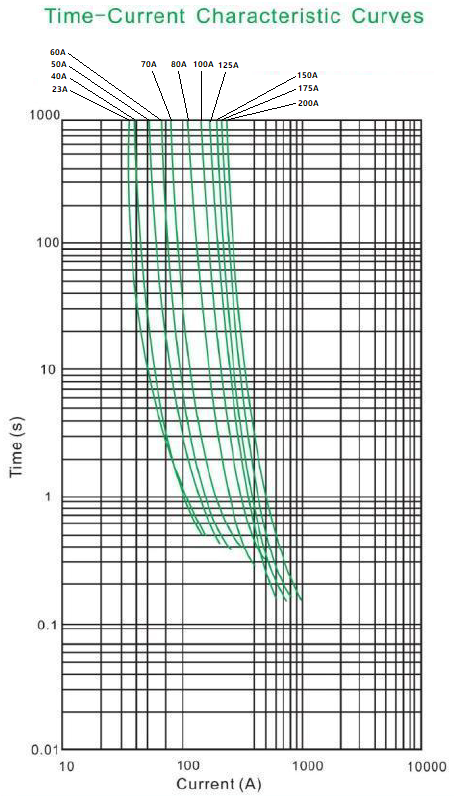How to Read Fuse Ratings | Understanding Fuse Specifications
Author: Solar 4 RVs
Understanding Fuse Ratings: A Comprehensive Buyer's Guide
Fuse ratings are a set of specifications that provide important information about the capabilities and limitations of a fuse. Knowing how to read these ratings can help you choose the correct fuse for your specific application, whether it's for a 12V DC system in a caravan or a marine off-grid setup.
Example ANL Fuse Nameplate Pictured Below
 Breaking Force at X Voltage
Breaking Force at X Voltage
The breaking force, also known as the breaking capacity or interrupting rating, is the maximum current that a fuse can safely interrupt at a specified voltage (X). This rating is crucial as it indicates the fuse's ability to safely clear a fault without causing damage or posing a safety hazard. If the fault current exceeds the breaking capacity, the fuse may not be able to interrupt the fault, leading to potential safety risks. This is important if you have a large battery bank that has a high potential short circuit current rating, always pick a fuse which can safely interrupt the fault at the voltage level of the battery voltage.
Current Rating
The current rating of a fuse refers to the maximum current that the fuse can carry under normal conditions. This rating is often provided in amperes (A). It's important to select a fuse with a current rating that matches the circuit it is meant to protect. A fuse with too high a current rating will not provide the necessary protection, while one with too low a rating will blow prematurely. If the manufacturer of the equipment you are protecting does not specify a fuse rating, normally you would select a fuse that is at least 25% larger than the circuit you are trying to protect, for example a 100A circuit would normally want at least a 125A fuse, ensuring the cable is rated to handle 125A.
Time Curve
The time curve, also known as the time-current characteristic (TCC), illustrates how long it takes for the fuse to blow at various levels of current. This allows you to understand the response of the fuse to different overcurrent situations. Fuses with a fast blow time curve will open quickly, providing tight control over the circuit's operation, while slow blow or time-delay fuses will tolerate brief overcurrent conditions, such as when a motor starts.
Time Table Midi Fuses Pictured Below
Resistance
The resistance of a fuse is measured in ohms (Ω) and represents how much the fuse will resist the flow of electric current. A lower resistance implies less voltage drop across the fuse and less power dissipation. However, be mindful that a fuse's resistance can change with temperature. Hence why values are often stated as cold resistance (25C).
Example Midi Fuse Table Pictured Below
Voltage Rating
The voltage rating of a fuse represents the maximum voltage the fuse can handle without arcing. If the voltage in your circuit exceeds the fuse's voltage rating, the fuse might not be able to effectively interrupt the current in an overcurrent situation. Always ensure that the voltage rating of the fuse is higher than the maximum voltage of your circuit.
Temperature Rating
The temperature rating of a fuse refers to the maximum ambient temperature that the fuse can operate at without its current-carrying capacity being affected. This is particularly important in applications that may be subject to high ambient temperatures. Exceeding the temperature rating can cause the fuse to blow prematurely. The higher the temperature, even within the rating, will still result in a shorter sevice life.
Choosing the Right Fuse
Understanding how to read fuse ratings is critical to choosing the right fuse for your system. Keep in mind your system's specific requirements and ensure the fuse you select aligns with those. If you're unsure, always consult with a professional or reach out to us for expert advice.
Explore Our Extensive Fuse Range
Now that you're equipped with knowledge on fuse ratings, explore our extensive range of fuses suited to a variety of applications. Our wide selection ensures you'll find the perfect fuse to protect your system, whatever your specific needs may be. Start exploring today and find the ideal fuse for your system.






























